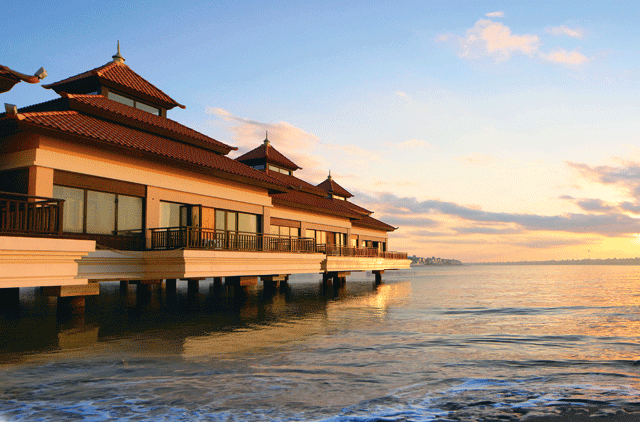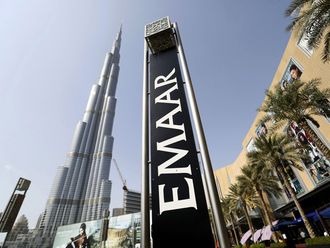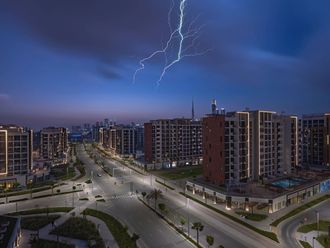
Oversupply has been a much hackneyed term since the downturn hit the UAE property market. However, that is what best describes the state of the country's hotel industry, which has the most number of rooms in the active pipeline (55,629) in the Middle East and Africa region, according to a report by research firm STR Global.
During the boom times Dubai's hotel inventory doubled, which has now resulted in relatively low occupancies and downward pressure on room rates.
There are industry experts who, however, attribute this trend to the cyclical nature of hotel markets. "When a new hotel opens, it attracts a fair share of existing demand but also creates additional induced demand from its international and local reservation centres. Thus the new property will, of course, bite into the market share of the existing hotels to an extent but also benefit the market," says Sven Gade, director and head of consulting, PKF, an international consulting house. "Historically, we have seen that newly opened five-star hotels have an occupancy of 60 per cent in the first year of operation in Dubai."
STR Global estimates that among the key markets in the region, Dubai has the largest number of rooms in the total active pipeline, 32,516, with 16,510 in the construction phase.
It follows then that with overall demand decreasing globally, hoteliers will have to look at generating demand from untapped markets. "New demand is being drawn from large markets such as China, India and Russia, albeit at lower rates. Rooms growth in Dubai has mostly been opportunistic, and not really justified in the sense of responding to frustrated demand," says Guy Wilkinson, partner and general manager at Viability, a firm that undertakes feasibility studies for hotels.
Potential markets
According to Dubai's Department of Tourism and Commerce Marketing (DTCM), feeder markets to Dubai are Europeans (32 per cent), Arab (28 per cent) and Asian (22 per cent) countries. With the brakes applied on the ambitious Dubailand project, touted to be the Disneyland of the Middle East, and other leisure attractions, tourists from the East are likely to bide their time before visiting the UAE. "Tourists from the East look more for attractions and heritage and are not sun-worshippers, unlike those from the West," says Michael Scully, managing director, hospitality at Seven Tides, a Dubai-based holding company. "It is imperative that operators and owners get together now in order to see how more clientele from more source markets can be driven to this destination, particularly in the leisure sector of the industry."
While debt finance is in place for projects that were announced prior to the downturn, tapping funds for new projects through the traditional lending avenues will be tough in the foreseeable future. Figures from research firm Proleads show cash expenditure this year on hotel projects under construction across the GCC will top $1.17 billion (Dh4.3 billion). The bulk of that spending power is in the UAE at $463.8 million (about Dh1.7 billion).
"Unless you have a new offering which will be attractive to the industry and can drive its own business, such as family hotels, will investors be willing to take the risks involved? Other avenues such as joint ventures, funds and wealthy individuals will now become the source of finance," says Scully.
Considering the risk involved in hotel investment, banks too have adopted stringent lending standards. Besides the higher interest rates and lower loan-to-value ratios, lenders now also "insist that a number of market studies and peer reviews be undertaken," says Gade.
Sceptics say the Dubai hotel industry is a victim of its own excess, citing lack of clear demarcation between the clientele of business and resort hotels. "Hotels, particularly resorts, have for a long time been in a position where they can turn on the tap for the market segment which yields them the greatest revenue and profitability. I believe the government should encourage resort hotels to concentrate more on resort clientele, allowing business hotels to yield better in shoulder and low periods," says Scully.
That said, Dubai's infrastructure, the newly opened Burj Khalifa, Dubai Mall and the emirate's positioning as a shopping destination justify the rise in room inventory to a certain extent.
Scully suspects Dubai will not ever suffer from oversupply due to its "gateway" location, high air traffic, exhibitions and the appeal of its resorts. "As seen in the worldwide context, hotels here will always do very well, particularly resorts."
Attributing poor performance in the hotel industry to misplaced entry timing between 2007 and 2008, Sven Gade insists hotels will remain profitable in the mid- to long-term. "Therefore, the cancellation and postponement of the hotels in the Dubailand and Bawadi projects is expected to support the case for those hotels that are opening in the near future in Dubai."
Meanwhile, the drop in the number of European travellers is likely to be offset by intra-regional tourists. The advent of low-cost carriers such as FlyDubai and Air Arabia is expected to attract the burgeoning middle class and younger travellers in the GCC region. "A long-term significant drop in European tourists is unlikely," says Gade.
Innovative offerings
Yet Scully says innovative packaging can drive new business to the region, pointing out two new product offerings — The Royal Amwaj on The Palm Jumeirah, which will be the first hotel in Dubai to offer fully inclusive packages, and the newly formed First and Foremost Hotels and Resorts, which is bringing the first fully integrated family resort hotels to the Middle East.
"Mövenpick is planning to offer all-inclusive packages at its new hotels coming up on the Palm, and that is a sign of the times. Surely many other resort hotels will follow suit," says Wilkinson.
According to STR Global, the upper upscale segment makes up the largest portion of the total active pipeline in Middle East and Africa with 33,448 rooms, followed by the unaffiliated segment (32,568 rooms) and the luxury segment (26,816 rooms).
The share of the economy segment in the pipeline is limited to 5,067 rooms. While Dubai has always had a high percentage of budget hotel accommodation, much of that supply was non-branded.
However, the opening of several international budget hotels such as the Ibis, Premier Innand Park Inn cannot be overlooked.
"Locally grown budget hotel chains such as the Centro and City Hotels represent an acknowledgement of that trend and also add a significant layer of induced demand to the market," says Gade. In the same vein, Wilkinson adds, "The advantages of economy hotels have come into much clearer focus in the current economic conditions. These include lower investment and operating costs, but higher profitability. Economic conditions are focusing travellers' minds on cost-cutting. This is reflected in the parallel growth and success of low-cost airlines."
However, Scully suggests that the time is opportune to invest in the four-star all-inclusive leisure market, particularly geared towards families.
A Deloitte analysis of STR Global hotel data has revealed that revenue per available room (RevPar) rates in the Middle East was estimated at $131.42 (Dh483) during the year-to-date February 2010, compared to $151.51 (Dh557) during the corresponding period in 2009.
"However, compared to the rest of the world, those figures stack up well. Europe recorded an estimated rate of $72.05 (Dh265) with $79.65 (Dh293) in Asia Pacific during the same period," says Ray Tinston, sales director at The Hotel Show, the Middle East's trade event for the hospitality and leisure sector.
Competitive rates
Reeling under poor occupancies, hotels in the emirate have already resorted to an all-out rate war. "We expect that many hotels will maintain lower rates to increase occupancy levels. According to our projections, the hotel ARRs (average room rate) will dip lower in 2010 but begin a steady increase by 2011," says Gade.
According to the preliminary figures from DTCM, the average length of stay in Dubai increased from 2.68 days in Q1 2009 to 2.98 days in Q1 2010, a hike of 11.4 per cent.
"This increase is attributable to a number of factors such as a drop in ADRs (average daily rate) and packages offered by local hotels that allow the consumers to avail of a free night upon booking a certain period of stay."
"As leisure prices drop, clients will take advantage of the incentives and stay longer. Worldwide, the least-affected tourists in a recession are those at the top-end, and traditionally this is a sector that Dubai still predominantly caters to," says Scully.
Short-stay segment
Dubai has capitalised on the several long-haul flights passing through it to boost the short-stay hotel segment. Mid-range hotels have traditionally catered to the short-stay segment.
"However, an increasing number of leisure travellers from the GCC, Eastern European, Russia and even Western European countries are now staying in these hotels and utilising the free or municipality beaches. The ever-increasing number of apartment hotels is creating a new market for the medium- to long-term business market and sectors of the GCC market," says Michael Scully, managing director, hospitality at Seven Tides.
"We understand that the transit travellers' short-term stop-over — up to three days — forms a large portion of business stays at mid-range hotels," adds Sven Gade from PKF The Consulting House.
Although tourism is expected to remain a key contributor to the UAE's economy since a great deal of infrastructure related to this sector is already in place, the success of airlines such as Emirates, Etihad and budget carriers should also help bolster the hospitality industry.
"However, the hotel sector is not solely dependent on airlines. The market is a destination in its own right for both business and leisure travel," adds Gade.












